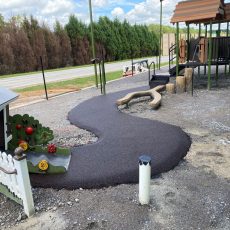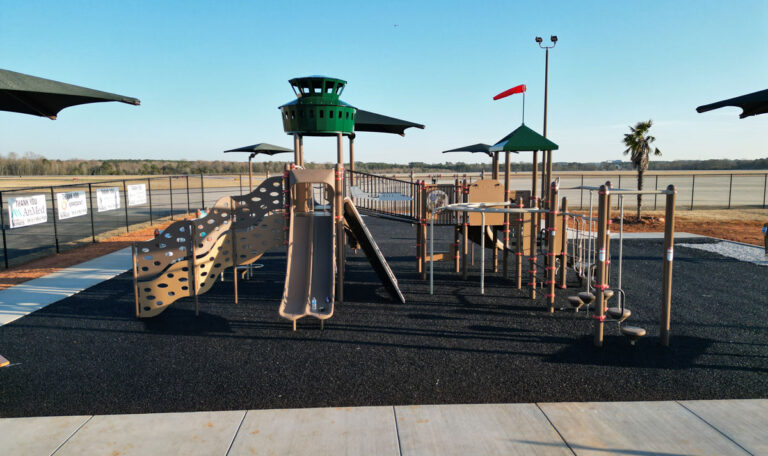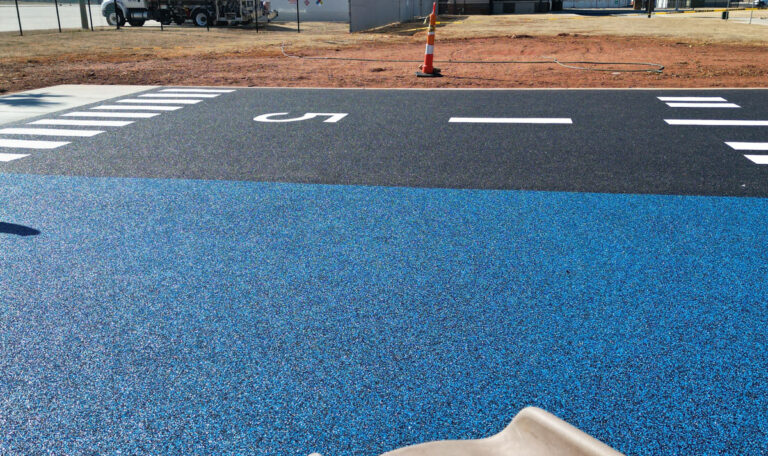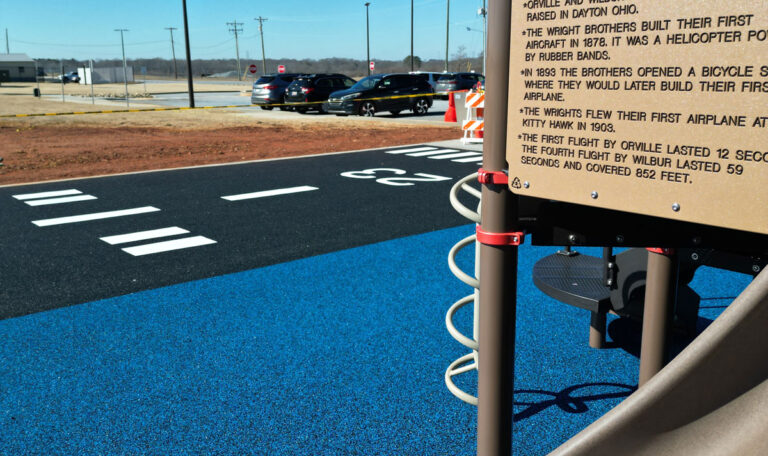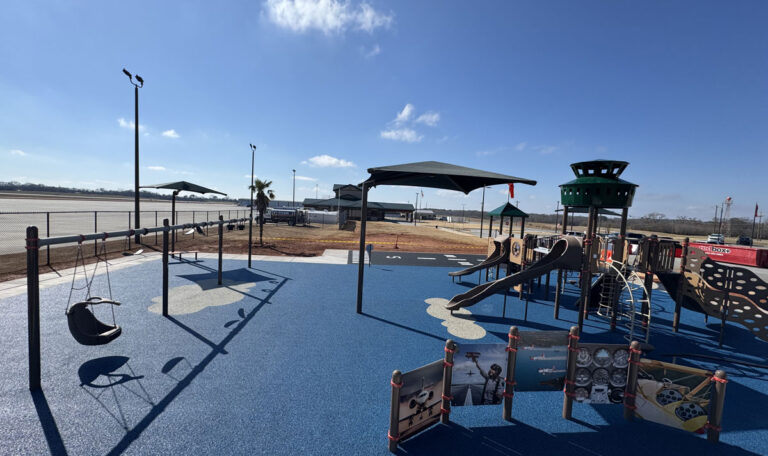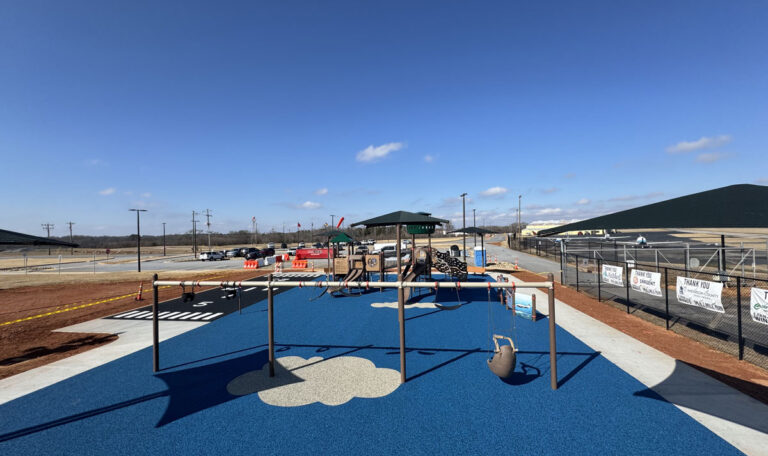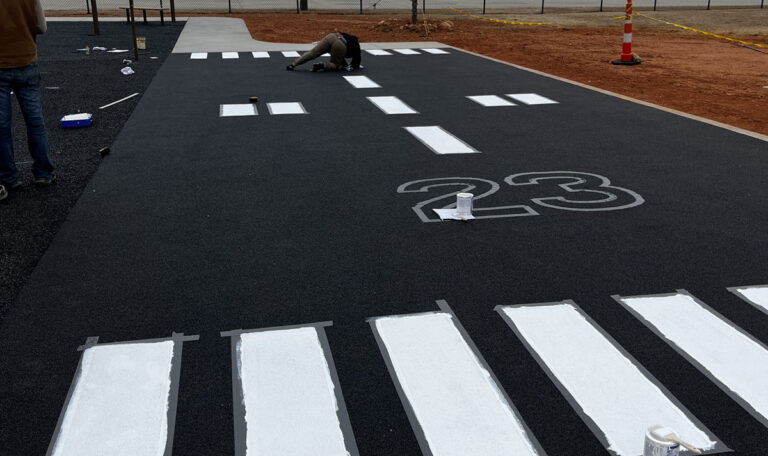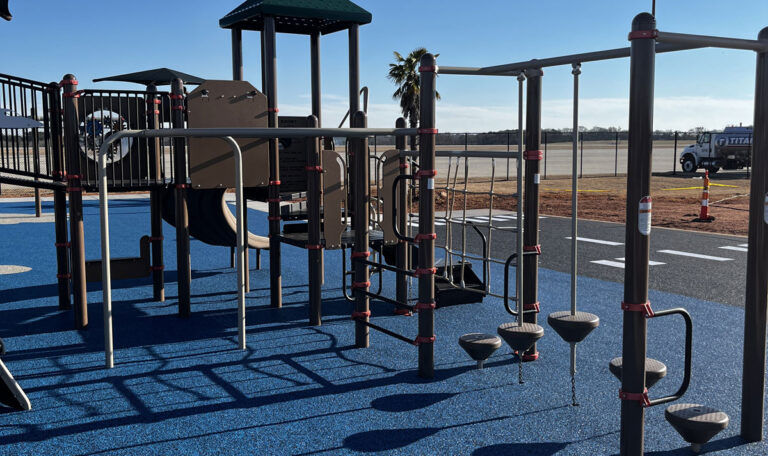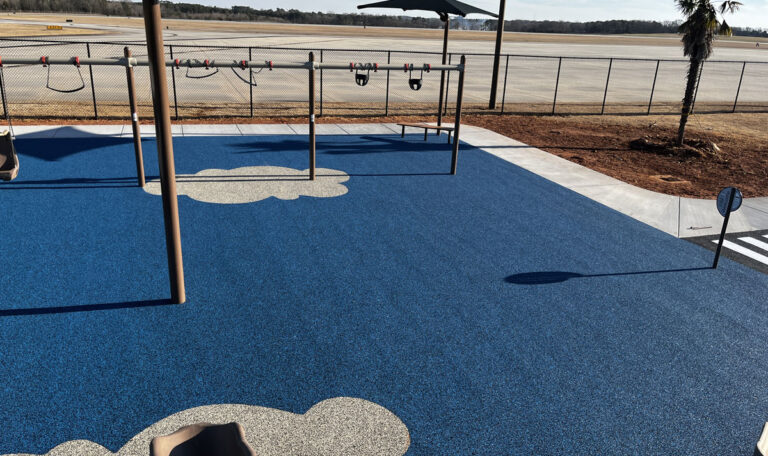Pavement trail systems offer a seamless way to explore the outdoors, providing durable, safe, and accessible routes for those who love to walk, run, or bike. These trails, typically made of asphalt or concrete, are integral components of urban and suburban outdoor infrastructure, connecting parks, greenways, and neighborhoods. They offer:
- Smooth surfaces that reduce stress on joints
- Improved safety features, such as clear markings and wide paths
- Low maintenance and long-lasting durability
I’m Landon Olson, and I’ve dedicated my career to changing environmental challenges into sustainable solutions. At Replay Surfacing, we specialize in crafting eco-friendly surfaces for pavement trails, ensuring that each project aligns with our environmental goals.

Pavement trail vocab explained:
– rubberised paving
– rubber pavers
– rubber sidewalks
Benefits of Pavement Trails
Pavement trails offer a variety of advantages that make them a preferred choice for many outdoor enthusiasts. Let’s explore some key benefits:
Easier on the Body
Walking or running on a paved trail can be gentler on your body compared to rougher, uneven surfaces. The smoothness of asphalt or concrete helps reduce the impact on your joints, making it a great option for those with sensitive knees or hips. This is especially beneficial for beginners or individuals recovering from injuries. The consistent surface allows for a steady stride, minimizing the risk of tripping or twisting an ankle.

Fewer People
Paved trails often see fewer crowds compared to popular natural trails, especially during off-peak hours. This means you can enjoy a more peaceful experience, whether you’re walking, jogging, or cycling. The reduced foot traffic allows for a more personal and uninterrupted connection with your surroundings, making it easier to maintain your pace without having to frequently steer around others.
Intimate with Nature
While natural trails might seem like the go-to for a nature experience, pavement trails can also offer a unique intimacy with nature. Many are designed to meander through parks, alongside rivers, or through wooded areas, providing beautiful views and a chance to observe wildlife. The thoughtful design of these trails often incorporates scenic overlooks and resting spots, allowing you to pause and enjoy the environment around you.
Incorporating these benefits into the design and planning of pavement trails not only improves user experience but also encourages more people to engage in outdoor activities. This aligns with Replay Surfacing’s mission to create sustainable and enjoyable outdoor spaces for everyone.
Types of Pavement Trails
When it comes to pavement trails, there are several types that cater to different needs and environments. Understanding these can help you choose the right trail for your next trip.
Paved Trail
A paved trail is typically made from materials like asphalt or concrete. These trails are smooth and even, providing a consistent surface that’s great for walking, running, and biking. They are designed to be accessible, making them ideal for people of all ages and abilities. The smooth surface is also easier on wheeled equipment like strollers and wheelchairs, which makes them inclusive for families and individuals with mobility challenges.
Asphalt Trails
Asphalt trails are a popular choice for their durability and flexibility. Asphalt is a material that can withstand various weather conditions without cracking or fading quickly. This makes it a practical option for trails in areas with harsh climates. Asphalt trails also have a bit of give, which can make them slightly more forgiving on the joints compared to harder surfaces like concrete.
These trails often wind through scenic areas, offering a pleasant experience for users. For example, the Stones River Trail, part of the Murfreesboro Greenway System, is a meandering asphalt trail that provides beautiful views and varied landscapes, making it a favorite among locals.
Trail Networks
A trail network is a series of interconnected trails that allow for longer and more varied journeys. These networks can include both paved trails and natural-surface paths, providing options for different types of users. Trail networks often connect parks, neighborhoods, and other points of interest, creating a comprehensive system that encourages exploration and outdoor activity.
For instance, the Murfreesboro Greenway System is an extensive network that includes multiple trailheads and sections, like the North Murfreesboro Greenway, which follows the East Fork Stones River. This connectivity fosters accessibility and offers a range of experiences, from urban walks to more secluded nature escapes.
Pavement trails and their networks play a crucial role in promoting outdoor activity and enhancing community connectivity. By understanding the different types of trails available, you can better appreciate how they contribute to creating enjoyable and sustainable outdoor spaces.
Designing the Perfect Pavement Trail
Crafting the ideal pavement trail involves a blend of thoughtful design, functional surfaces, and an understanding of the workout benefits they offer. Let’s break down what makes a pavement trail truly exceptional.
Trail Design
Designing a pavement trail starts with understanding the needs of its users. A well-designed trail should be accessible and safe, with clear signage and ample space for different activities. This means considering the width for passing and the smoothness for wheeled users like cyclists and stroller-pushers.
Trails should also meander through visually appealing areas, which improves the experience. For example, the Stones River Trail in the Murfreesboro Greenway System not only offers a smooth asphalt surface but also winds through diverse landscapes, providing beautiful views and a connection to nature.
Incorporating features like benches, scenic overlooks, and informative markers can make the trail more engaging. These elements invite users to pause, enjoy the surroundings, and learn about the local environment.
Natural Surfaces
While pavement trails are primarily made of asphalt or concrete, integrating natural elements can improve the experience. This might include sections that transition into dirt paths for a more challenging workout or areas lined with native plants and trees to create a sense of immersion in nature.
Natural surfaces can offer a softer feel underfoot, which some users find more comfortable for longer walks or runs. They also encourage more muscle engagement due to their uneven texture, providing a different kind of workout.
Workout Benefits
One of the key benefits of a well-designed pavement trail is the workout it offers. The smooth, even surface is ideal for consistent, low-impact exercise. This is particularly beneficial for those looking to minimize strain on their joints while still getting a good workout.
Trails like those in the Twin Cities offer a mix of paved and natural surfaces, allowing users to choose their level of challenge. Running or walking on pavement can be easier on the body compared to harder surfaces like aggregate, while still providing a solid cardiovascular workout.
Moreover, the accessibility of these trails means more people can enjoy them, promoting a healthy, active lifestyle for a broader audience. Whether you’re a seasoned runner or someone just starting out, a well-crafted pavement trail can offer the perfect setting for your fitness journey.
Pavement Trail Maintenance and Safety
Maintaining a pavement trail is crucial for ensuring safety and enjoyment for all users. Let’s explore the key aspects of trail maintenance and safety, focusing on tripping hazards, isolation, and footwear.
Tripping Hazards
Even well-paved trails can present tripping hazards. Loose gravel, tree roots, and uneven surfaces are common culprits. These hazards can be especially tricky after storms or during seasonal changes when debris is more likely to accumulate.
Regular maintenance is vital to keep trails safe. This includes clearing debris, repairing cracks, and ensuring that all signage is visible and up to date. For instance, the Stones River Trail is known for its well-maintained surface, which minimizes the risk of tripping and improves the overall user experience.
Isolation
While the solitude of a pavement trail can be a peaceful escape, it also poses some safety concerns. Trails with fewer people can make users feel isolated, which might be risky if an accident occurs or if someone gets lost.
To mitigate these risks, it’s wise to hike or run with a buddy. If you’re venturing out alone, inform someone of your plans and estimated return time. Additionally, having a map or using GPS can help prevent getting lost, especially on less familiar trails.
Footwear
Choosing the right footwear is essential for a safe and comfortable experience on a pavement trail. Trail running shoes, like adidas’ Terrex Trail Rider, offer excellent traction and support, making them a great choice for these surfaces. They provide a balance between comfort and grip, crucial for navigating both smooth and slightly uneven paths.
Sports sandals can be a good option in hot weather, offering breathability and comfort. However, they might not provide as much protection against debris. Always consider the trail conditions and your personal comfort when selecting footwear.
The right shoes can help prevent slips and falls, making your trail experience more enjoyable and safer.
Incorporating these safety measures ensures that pavement trails remain inviting and accessible for everyone. Next, we’ll address some frequently asked questions about pavement trails to further improve your understanding.
Frequently Asked Questions about Pavement Trails
What is a paved trail?
A paved trail is a path with a hard, smooth surface, typically made of asphalt or concrete. These trails are designed for easy access and are perfect for walking, biking, or running. They offer a stable surface that makes outdoor activities more accessible to people of all ages and abilities. Unlike natural dirt paths, paved trails require less maintenance and are often found in urban parks or along scenic routes.
Is it better to walk on pavement or dirt?
Choosing between walking on pavement or dirt depends on your goals and physical condition.
Pavement is generally easier on the feet and provides a consistent surface, which can be beneficial for those with joint issues. It reduces the risk of tripping over uneven ground, making it a safer option for many. However, the hard surface can lead to more impact on the body over time, especially on the knees and hips.
Dirt trails, on the other hand, offer a softer surface that absorbs more shock, potentially easing the strain on your joints. They also provide a more challenging workout due to their uneven terrain, which engages more muscles and improves balance. If you’re looking for a more intense workout and don’t mind the occasional trip hazard, dirt trails might be the way to go.
What are the two types of trails?
Trails generally fall into two categories: access trails and backcountry trails.
Access trails are usually well-maintained and easily reachable. They are often paved or have a well-defined path, making them perfect for casual hikers, families, and those seeking a leisurely stroll. These trails are typically located in parks or urban areas and are designed for easy navigation.
Backcountry trails, in contrast, are more rugged and less maintained. They are often found in remote or natural areas and can be challenging to steer. These trails are ideal for experienced hikers looking for trip and a closer connection with nature. They require more preparation and the right equipment, as they can be isolated and difficult to traverse.
Understanding the differences between these trail types can help you choose the right path for your next outdoor trip. Whether you prefer the stability of a paved trail or the challenge of a backcountry trek, there’s a perfect trail out there for everyone.
Conclusion
At Replay Surfacing Inc., we are dedicated to changing environmental hazards into sustainable, durable surfaces that improve outdoor experiences. Our innovative use of recycled materials, especially tires, allows us to create rubber surfacing products that are not only eco-friendly but also customizable for a variety of applications, including playgrounds, replay courts, and splash pads.
Our commitment to sustainability goes beyond just recycling. By converting scrap tires into value-added products, we actively contribute to reducing waste and promoting environmental health. This approach not only helps in preserving the planet but also provides our customers with long-lasting, low-maintenance solutions that are both safe and attractive.
Our rubber paving solutions offer unique benefits such as impact absorption and slip resistance, making them ideal for creating comfortable and secure pavement trails. These trails are perfect for walking, biking, and running, providing a consistent and stable surface that is easier on the joints compared to traditional asphalt or concrete paths.
As we continue to innovate and expand our product offerings, our goal remains clear: to craft surfaces that are not only practical and appealing but also aligned with our values of sustainability and environmental responsibility. Whether you’re looking to revamp a playground, a sports facility, or a scenic walking trail, Replay Surfacing Inc. is here to provide the perfect solution for your needs.
Join us in our mission to create a greener, more sustainable world—one rubber surface at a time.

